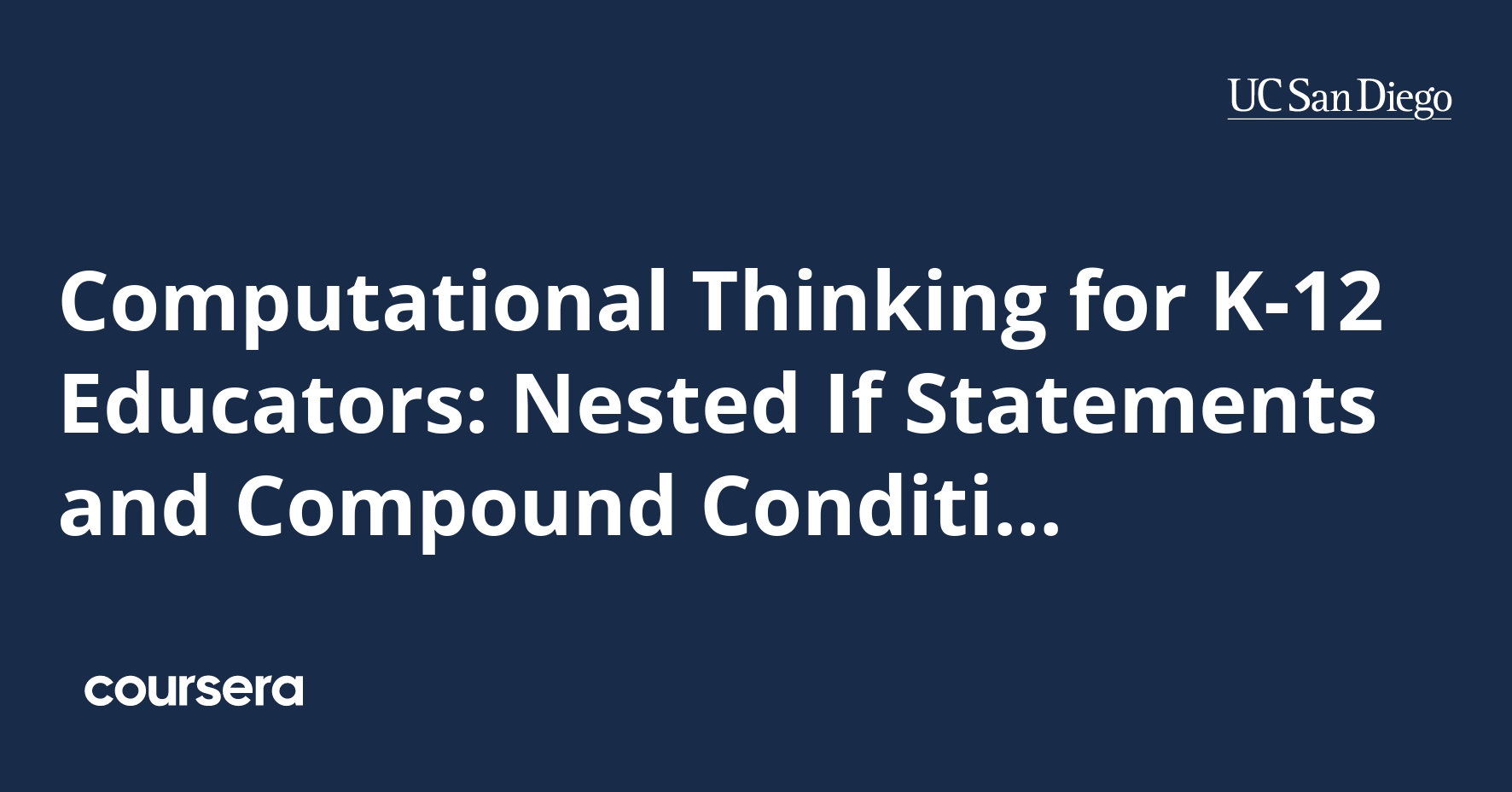Description
How could you program a complex “choose your own adventure” game? How can your soccer game determine goals, balls out of bounds, and corner kicks? You’ll learn to do both of these in this course!
This class teaches the concepts of nested if/else statements and compound Boolean conditional expressions. For each concept, we’ll start by helping you connect real-world experiences you are already familiar with to the programming concept you are about to learn. Next, through a cognitively scaffolded process we’ll engage you in developing your fluency with problem solving with nested if/else statements and compound conditionals in a way that keeps frustration at a minimum.
Along the way you will learn about the common challenges or “bugs” students have with these concepts as well as ways to help them find and fix those concepts. You’ll also be guided in running classroom discussions to help students develop deeper understanding of these concepts.
Finally, you’ll prepare classroom resources to help your students to develop debugging skills. Additionally, you will create resources to help educate your students about the impacts of lack of equity in K-12 CS instruction.
What you will learn
Course Orientation
Nested If/Else Part 1
Explore conditional executing by learning about nested if-else statements. Use nested if-elses in examples where there are three or more options. Design your own conditional system, re-create Snap programs based on video solutions, and review some common debugging tips.
Nested If/Else Part 2
Continue with nested if-else statements with our non-interactive programming puzzles to check your knowledge. Get prepared to run classroom discussions on some challenging if-else statements and explore a different, free, online programming system — pencilcode.net
Compound Conditionals Part 1
Learn how to create compound conditionals with and and or. Do an unplugged activity to see compound conditional apply in a soccer game. See how truth tables define the behavior of Boolean operators and and or and get the chance to fill one in. Create your own compound conditional programs using Snap, review others’ work, and learn debugging tips.
Compound Conditionals Part 2
Deepen your understanding of compound conditionals with some pretty challenging classroom discussion questions. Learn about the design behind the Scratch programming language and read and use starter code in Scratch to create a soccer game that announces goals and various out of bounds situations.







